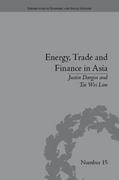Question
Please Help me with these questions. If E were the old equilibrium in the market for wheat in the figure below, and E' the new
Please Help me with these questions.
- If E were the old equilibrium in the market for wheat in the figure below, and E' the new one, which of the following could have caused the change?
a. Consumer income rose, causing a supply shift.
b. Bad weather caused a supply shift.
c. Supply and demand both shifted.
d. Consumer income rose, causing a demand shift.
e. All of the above are plausible descriptions.
- Market failure is a situation in which
a. The market does not provide the ideal or optimal amount of a particular good.
b. There are too many buyers but not enough sellers.
c. Prices are too high for "average" people to buy necessities.
d. There is a question over the quality of a product for sale.
- When negative externalities are involved, the market is said to
a. Fail, because it underproduces the good connected with the negative externality.
b. Fail, because it overproduces the good connected with the negative externality.
c. Succeed, because it produces the socially optimal quantity of the good connected with the
negative externality.
d. Be "in optimum," because the equilibrium fully adjusts for the negative externality.
- Marginal social benefits are equal to
a. Marginal private benefits + marginal internal benefits.
b. Marginal private benefits - marginal internal benefits.
c. Marginal private benefits + marginal external benefits.
d. Marginal private benefits - marginal external benefits.
- A perfectly competitive firm should hire an additional worker only if
a. Total revenue is less than total cost.
b. The worker's marginal revenue product is less than the wage rate.
c. The worker's marginal product falls.
d. the worker's marginal product rises.
e. the worker's marginal revenue product exceeds the wage rate.
- A "price taker" is a firm that
a. Has the ability to control the price of the product it sells.
b. Does have the ability, although limited, to control the price of the product it sells.
c. Can raise the price of the product (above the market price) and still sell some units of its
product.
d. Sells a differentiated product.
e. None of the above.
7. Suppose that a jewelry store found that when it increased prices by 10 percent, sales revenue
increased by 3 percent. Which of the following is true about the price elasticity of demand for
the store's goods?
a. Demand is perfectly inelastic.
b. Demand is inelastic, but not perfectly.
c. Demand is unitary classic.
d. Demand is elastic, but not perfectly.
e. Demand is perfectly elastic.
8. The opportunity costs associated with the use of resources owned by a firm are:
a. externalities.
b. implicit costs.
c. explicit costs.
d. sunk costs.
e. None of the above.
9. Which of the following is most likely to be true of economic and accounting profits?
a. Accounting profits are less than economic profits.
b. Economic profits plus accounting profits equal zero.
c. Accounting profits minus economic profits equal zero.
d. Economic profits are less than accounting profits
10. The demand curve facing a perfectly competitive firm
a. Is downward sloping.
b. Is upward sloping.
c. Is perfectly horizontal.
d. Is perfectly vertical.
e. May be downward or upward sloping, depending upon the type of product offered for
sale.
Step by Step Solution
There are 3 Steps involved in it
Step: 1

Get Instant Access to Expert-Tailored Solutions
See step-by-step solutions with expert insights and AI powered tools for academic success
Step: 2

Step: 3

Ace Your Homework with AI
Get the answers you need in no time with our AI-driven, step-by-step assistance
Get Started


